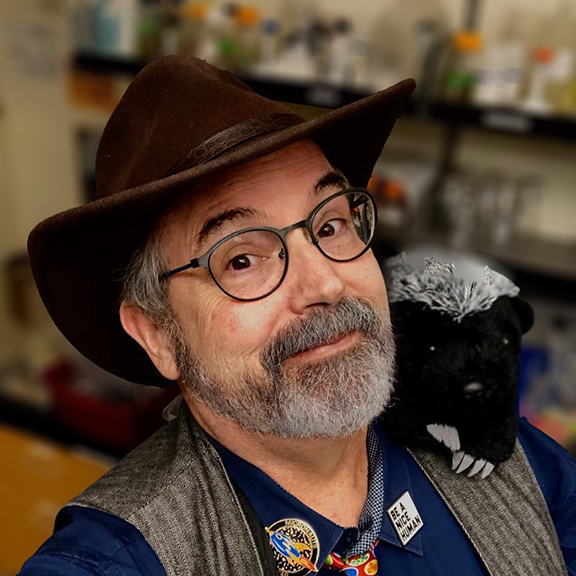Today, Dr. Rachel Dutton, Science Resident at the Astera Institute in Berkeley, California, joins the #QualityQuorum to discuss the complex (and tasty) microbial communities responsible for cheese as a model system for microbial interactions, as well as her interesting path through science.
Today, Sarah Bordenstein, Associate Research Professor of Biology & Entomology at Penn State University and Director of Discover the Microbes Within! The Wolbachia Project joins the #QualityQuorum to tell us about the most successful pandemic on the planet, the fascinating endosymbiotic bacterium Wolbachia, and how she has used this fascinating system to teach young people about molecular biology, bioinformatics, and evolution.
Today, Dr. Jeri Barak of the University of Wisconsin Madison joins the #QualityQuorum to chat about how various microbes (some of which can cause disease in humans) can gain access to plants, sometimes via group behavior. With media coverage of Salmonella contamination in lettuce, Dr. Barak’s work is especially timely! She will also discuss what it is like to be a plant pathologist!
Today, Dr. Vincent Young of the University of Michigan Department of Internal Medicine and Infectious Disease Division in Ann Arbor, joins the #QualityQuorum to chat about the ecology of the human gut as it relates to a serious bacterial disease caused by Clostridiodes difficile. He will also discuss what it is like to be a medical scientist with both MD and PhD degrees.
Today, Dr. Ana Maria Porras of the Department of Biomedical Engineering at the University of Florida, joins the #QualityQuorum to chat about her work studying gut microbes and the gut, IBDs, representation, and even how fiber arts can inspire microbial wonder!
Today, Dr. Paula Welander, Associate Professor of Environmental Earth System Science at Stanford University (and #DocMartian #4) joins the #QualityQuorum to discuss the work she and her colleagues are doing probing at early life by studying lipid biosignatures that can appear in the fossil record—and the role that cholesterol and related molecules have on microbial life.
Today, Dr. Manu Ramalho of West Chester University in Pennsylvania joins the #QualityQuorum to discuss the wonderful world of ants, their microbiomes, and what their intersection can teach us about our place in the natural world.
Today, Dr. Brian Stevenson of the University of Kentucky College of Medicine joins the #QualityQuorum to discuss a twisty twirling form of life, spirochetes, ticks, and human diseases like Lyme Disease.
Today, Dr. Jennifer Biddle of the School of Marine Science and Policy at the University of Delaware joins the #QualityQuorum to discuss deep microbial life in marine environments (and why you should care about it), as well as her fascination with archaea!
Today, Dr. Hazel Barton, Loper Endowed Professor of Geological Sciences at the University of Alabama, joins the #QualityQuorum to tell us about her explorations of cave microbiology and the relationship between microbiology and geology!

